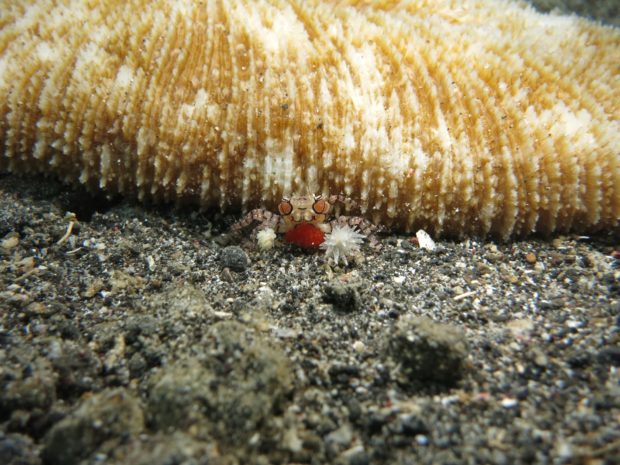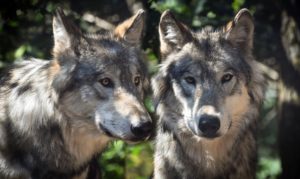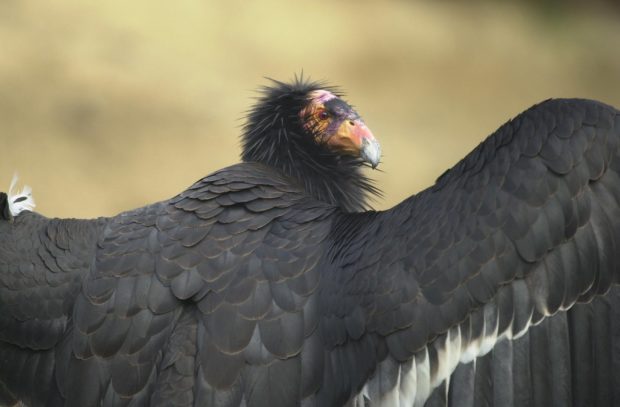We have much more to do and your continued support is needed now more than ever.
Birds and the Bees: Remarkable Wildlife Bonds
Valentine’s Day: love is in the air, providing the perfect excuse to take a lighthearted look at how North American wildlife gets in on the concepts of friendship and romantic love.
Let me tell you ‘Bout my Best Friend
Boxer Crab and Anemones
Boxer crabs, also known as Pom-Pom crabs, have found an unusual ally in sea anemones. In exchange for a ride that permits anemones to collect more food particles, these crabs get to wield their tentacled friends as boxing gloves or pom-poms. This allows them to throw some mean left hooks at predators when directly threatened.

Owls and Woodpeckers
At mere sight these two birds could not be more different. However, the mystifying owl and the upbeat woodpecker have developed a symbiotic relationship that benefits their entire ecosystem. Despite their striking demeanor owls do have a weak spot, and that is their inability to build nests. Having to rely on other creatures to create their nests, owls have found the perfect architect in the woodpecker. Even though it might seem like hardworking woodpeckers fly away empty handed, supporting the wellbeing of the owl benefits them and the ecosystem they inhabit, because a healthy owl population reflects a healthy local environment.
Sharks and Remora
From the Great White Shark, also known as the king of the ocean, to its fashionable cousin the Leopard Shark, sharks hold a special place in the human psyche. The negative and mostly unfair reputation that surrounds sharks seems less appropriate in light of interactions with their less well-known friends, the remoras. Also known as suckerfish, remoras can usually be found attached to the bottom of a shark, using the suction cup-like organ on their dorsal fins. This relationship benefits both the remoras and the shark, because remoras get a first chance to feed off the food scraps dropped by the shark and the parasites on the shark’s skin and mouth, while the shark host gets a free cleansing. Additionally, hanging out with such an imposing character protects the remora from predators.
Till Death Do Us Part
Bald eagles
Bald eagles, the iconic symbol of the United States, mate for life. Considering they start breeding at around 4 years and can live for over 20 years, these majestic birds can build a bond that lasts longer than many human relationships. Year after year, the pair returns to the same spot to perform their spectacular courtship rituals and continue building their nest, a structure that symbolizes the longevity of their union. Bald eagle nests are the largest of any North American bird, and there have been reports of a nest found in Ohio that was used for more than three decades, “measured 9 feet across and nearly 12 feet high, and was estimated to weigh more than 2 tons.”
Gray wolves

Despite popular notions of being loners, wolves are highly social animals that live and travel in packs. The pack is usually led by an alpha male and female, and consists of a “nuclear family” formed by the pair and their offspring. The pack size averages around 7 or 8 members, although there have been sightings of packs of as many as 20 wolves. The alphas, which are believed to mate for life, are typically the only ones to mate. Each year, they have one litter of between four and six pups, which rely solely on their mother’s milk for the first three weeks of their lives. After that they are ready to consume meat, so the rest of the pack supports the family by taking turns hunting and regurgitating meat to feed the pups.
California condor
The critically endangered California condor is the largest flying bird in North America. With a wingspan that ranges between 9 to 10 feet, these imposing creatures do not reach their reproductive maturity until they are between six and eight years old. California condors tend to be monogamous and once in a pair, they usually mate for life or at least for multiple years in row. Every two years, the female will lay a single egg between January and March, which will then be incubated and taken care of by both parents. This makes their breeding rate the lowest one in the avian world, which only hinders their conservation.

A necessary disclaimer: Assigning human traits or feelings to wildlife is totally unscientific! It is important to remember that despite conduct which people might relate to as emotional, the rationale behind animal behavior might not be the same as ours. Keeping that in mind, these examples of animals seem to mimic our notions of romantic love and friendship when establishing relationships with a mate or a different species.





















